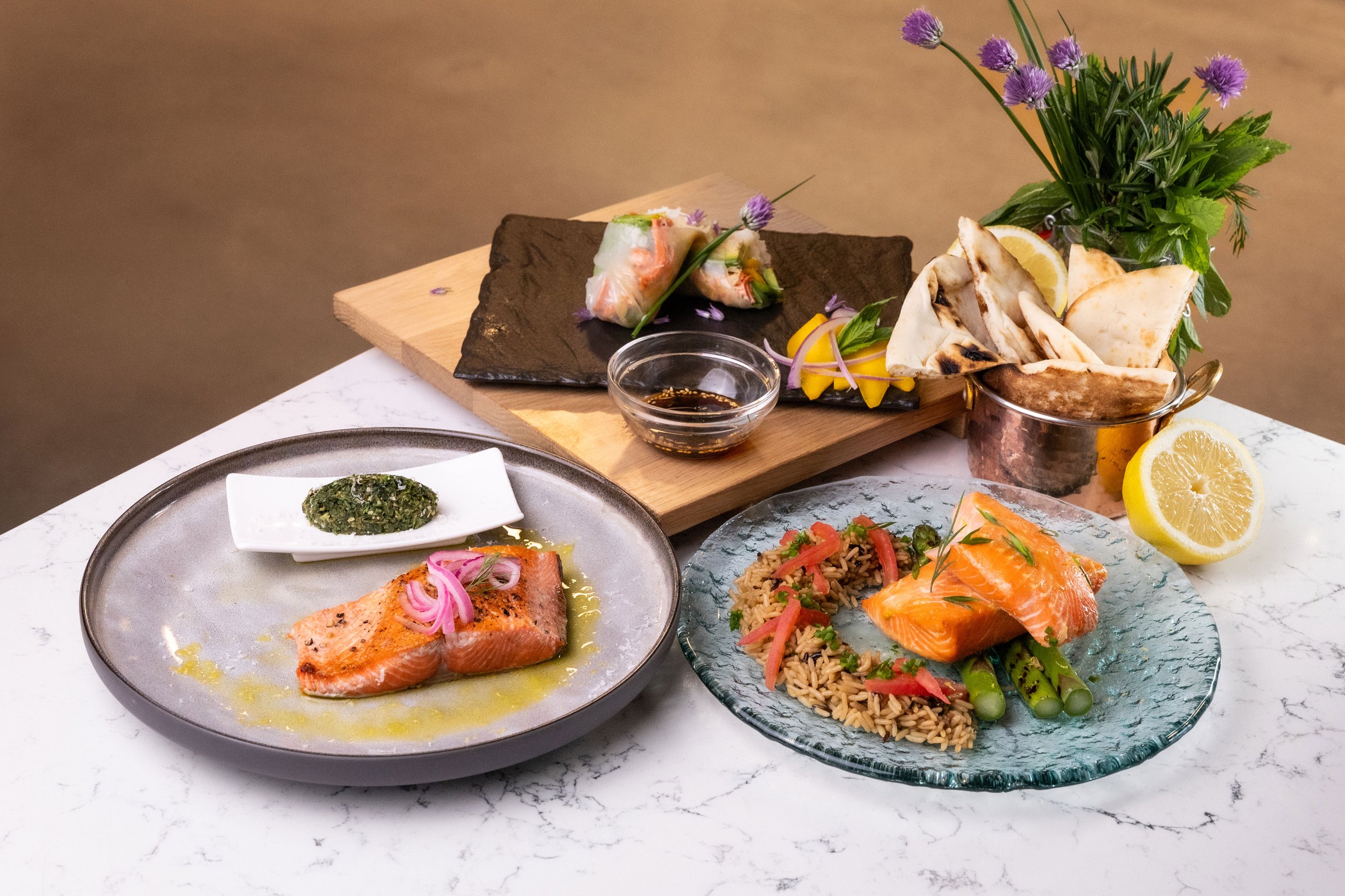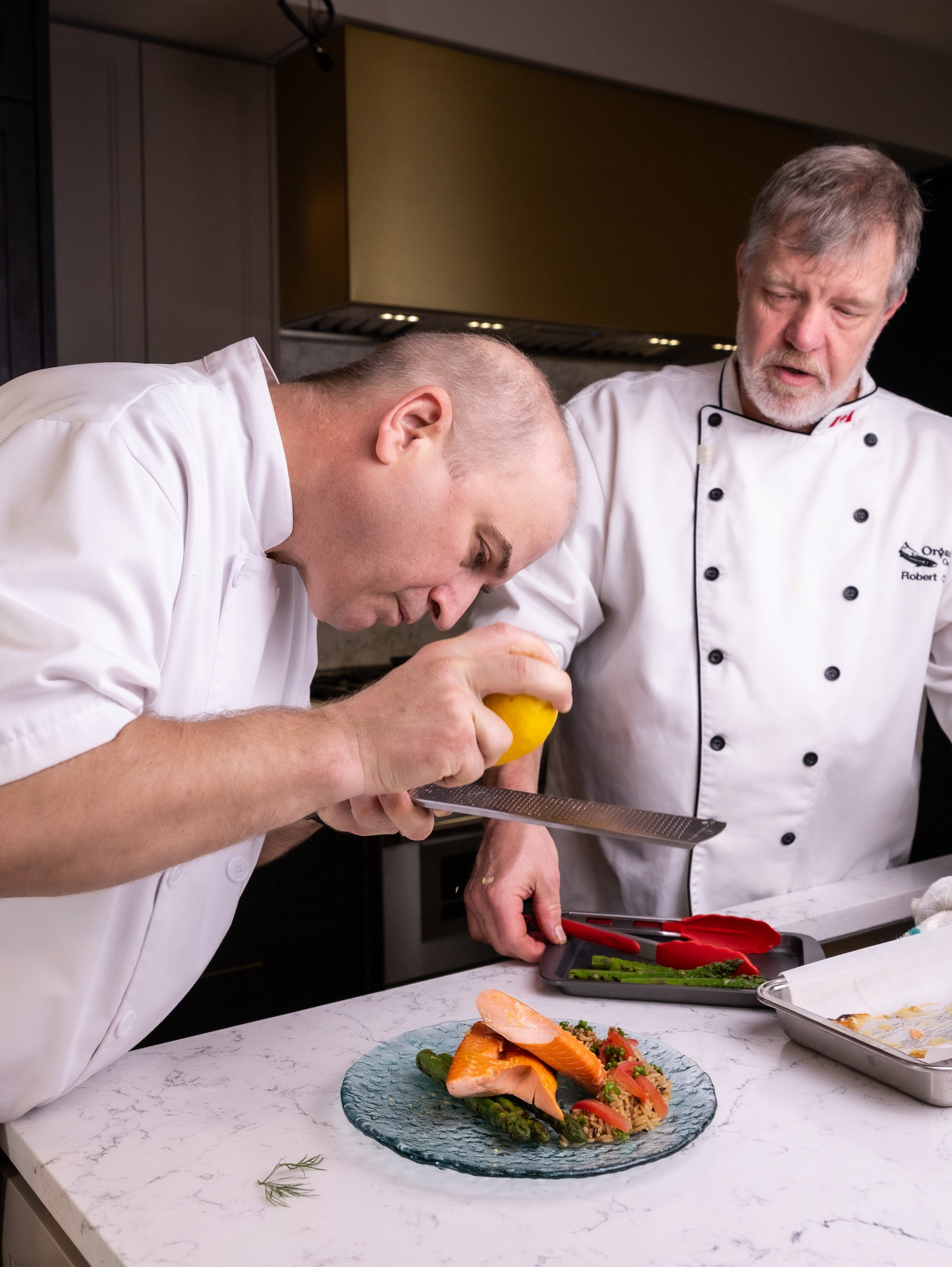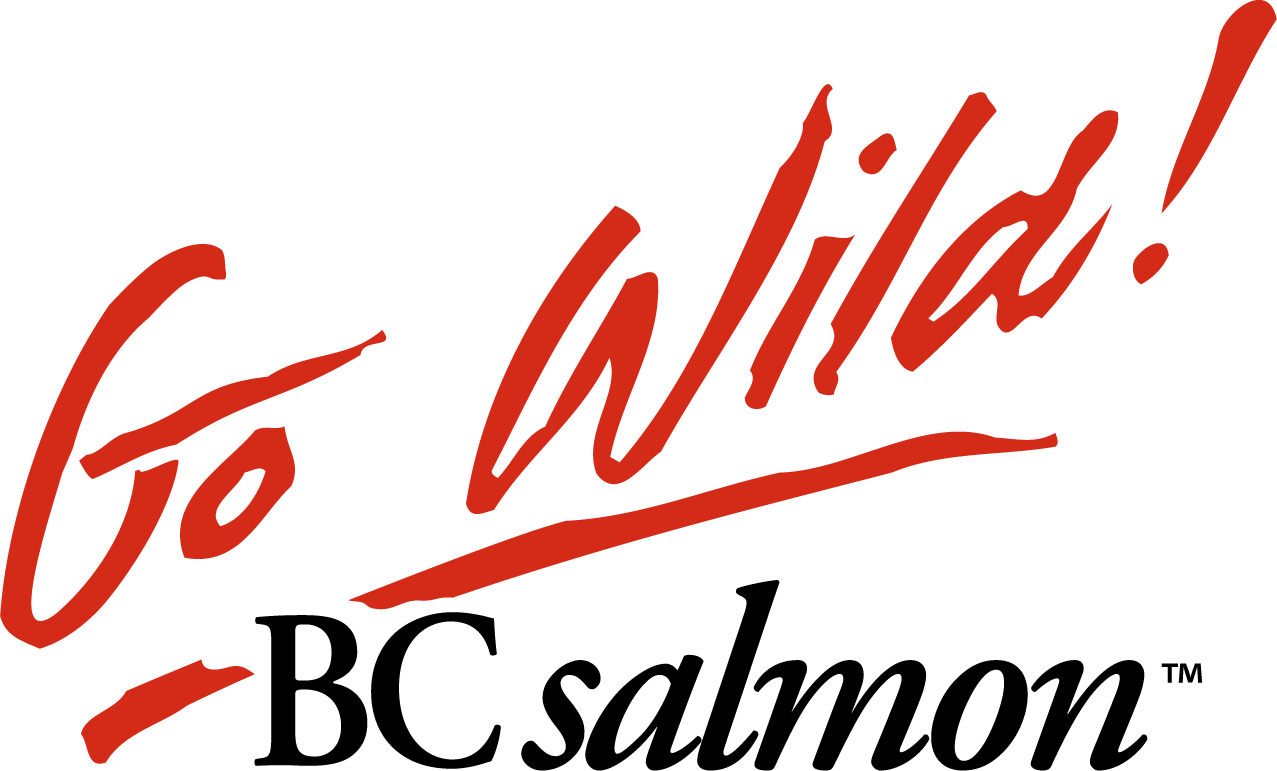Salmon Celebration for a Media Audience
From the fishermen who brave the waters to the processors and retailers who bring it to your table, every piece of Wild BC Salmon carries a story of dedication and tradition.
QUICK MEDIA LINKS
-
✺
Sustainably Sourced: Eating Wild BC salmon supports sustainable fishing practices that help maintain the balance of marine ecosystems. BC’s fisheries follow strict guidelines to ensure the long-term health of salmon populations.
-
✺
Rich Cultural Heritage: Enjoying Wild BC Salmon connects you with the rich cultural traditions of British Columbia’s coastal communities, where generations of families have made their livelihoods from fishing these waters.
-
✺
Variety to Choose From: British Columbia is home to five different types of Wild BC Salmon: Sockeye, Chinook, Coho, Pink, and Chum. Each type offers a unique flavour and texture, providing a variety of culinary experiences.
-
✺
Supports Local Economies: By choosing Wild BC Salmon, you’re supporting local fishermen, processors, and communities. The industry provides thousands of jobs and contributes significantly to the regional economy.

RECIPES
Do you know your salmon?
Do you know your salmon?
The five species of Wild BC Salmon all share a similar outward appearance, but offer a marked distinction in flesh colour.
-
Latin Name: Oncorhynchus nerka
Other Common Names: Red Salmon (when canned)
Average Commercial Weight: 2.7 kg (6 lbs)
Average Commercial Size: 51 cm – 61 cm (20 inches – 24 inches)
Life Cycle: 5 years
Migration: Sockeye spawn in streams with lakes in their watershed and stay in those lakes for one to three years before migrating to sea. They move rapidly out of the estuaries and thousands of miles into the Gulf of Alaska and North Pacific Ocean where they feed. They return to their spawning stream when they are three to, at times, even six years old.
Outer Appearance
Small black speckles on its deep blue-green back and silver sides
No spots on the tail
Slender and firm body
Develop a bright red body and green head when spawning
Large and distinct scales
13 – 18 anal rays
Flesh Colour: Deep red to orange red colour is maintained when cooked
Flavour: Rich and full
Texture: Firm with tighter flakes
Suggested Cooking Methods:
Bake, Broil, Grill, Poach
-
Latin Name: Oncorhynchus gorbusha
Other Common Names: Humpback, Humpie
Average Commercial Weight: 2 kg (4 lbs)
Average Commercial Size: 35 cm – 46 cm (14 inches – 18 inches)
Life Cycle: 2 years
Migration: Pink salmon fry migrate to the sea as soon as they emerge from the gravel and live almost their entire two years in ocean feeding areas. Adults leave the ocean in the late summer and early fall and usually spawn in streams, not fed by lakes, that are a short distance from the sea.
Outer Appearance
Shiny silvery skin
Large black oval spots on the back and tail
Develop a hump on their back when spawning
Very small scales
13 – 17 anal rays
Flesh Colour: Light rose-pink colour lightens slightly when cooked
Flavour: Mild and delicate
Texture: Softer
Suggested Cooking Methods:
Bake, Broil, Poach
-
Latin Name: Oncorhynchus kisutch
Other Common Names: Silver, Medium-red (when canned)
Average Commercial Weight: 2 kg – 5.5 kg (4 lbs – 12 lbs)
Average Commercial Size: 56 cm – 66 cm (22 inches - 26 inches
Life Cycle: 3 years
Migration: Adult coho usually return to fresh water between late summer and early fall. Most choose streams close to the ocean, although some will journey as far as 1,500 kilometres (932 miles) inland. Young coho fry are different than the other salmon species as they stay in their spawning stream for a full year after they emerge from the gravel.
Outer Appearance
White gums
Spots above lateral line and on upper lobe
Thick caudal
Silver colour adjacent to caudal
Flesh Colour: Vibrant reddish-orange colour is maintained when cooked
Flavour: Moderately full and versatile
Texture: Firm and fine textured
Suggested Cooking Methods:
Bake, Broil, Grill, Poach, Sauté
-
Latin Name: Oncorhynchus keta
Other Common Names: Silver-bright, Keta (when canned)
Average Commercial Weight: 3.5 kg (8 lbs)
Average Commercial Size: 56 cm – 66 cm (22 inches – 26 inches)
Life Cycle: 3 – 5 years
Migration: Chum salmon generally spawn in late fall and usually in the lower tributaries along the coast, rarely more than 150 kilometres (93 miles) inland. Fry emerge in the spring and go directly to sea.
Outer Appearance
Dark metallic blue-green back with silver sides and belly
Develop dark vertical bars called watermarks on their sides as they mature and migrate to fresh water
Large pupil
Large mouth with maxillary extending behind the eye
No spots on the back, dorsal fin or tail
Narrow caudal
13 – 17 anal rays
Flesh Colour: Reddish-pink. Becomes paler as fish migrates upstream
Flavour: Milder and more delicate
Texture: Firm and can be drier
Suggested Cooking Methods:
Bake
Broil
Grill
Poach
Sauté
Steam
-
Latin Name: Oncorhynchus tschawytscha
Other Common Names: Spring, King, Tyee
Average Commercial Weight: 9 kg (20 lbs)
Average Commercial Size: 56 cm – 81 cm (22 inches – 32 inches)
Life Cycle: 4 – 7 years
Migration: Chinook migrate upstream from the spring through the fall as far as 1,500 kilometres (932 miles) inland. Chinook fry may go to sea soon after hatching, or after one to two years in fresh water.
Outer Appearance
Small eyes
Black gums
Small round spots on its back, dorsal fin and tail
Thick caudal
13 – 19 anal rays
Flesh Colour: Deep-red to ivory colour lightens slightly when cooked
Flavour: Rich and full
Texture: Moderately firm with larger flakes Flesh
Suggested Cooking Methods:
Bake, Broil, Grill, Poach

Meet our guest Chefs from Aramé
-
Chef Robert Clark discovered his love of seafood while growing up on the Gaspé peninsula and learning to fly fish salmon with his father on the St. Lawrence River. After finishing his culinary arts degree at Toronto’s George Brown College, he apprenticed and worked with some of Canada's best known chefs, including Jamie Kennedy, Nigel Shute and Michael Bonaccini.
Returning from a working sabbatical in Asia in 1992, Chef Clark and his wife stopped in Vancouver and fell in love with the city. He took on a role as Sous Chef at Star Anise Restaurant and decided to make Vancouver home. In 1997, he became the Executive Chef of Vancouver’s only fine dining seafood restaurant, C. During his time at C — including his promotion to executive chef for the Kambolis Restaurant Group which also oversaw Vancouver renowned restaurants’ Raincity Grill and Nu — Chef Clark changed the way Canadians ate seafood.
In search of high-quality fish and shellfish, Chef Clark was one of Canada’s first chefs to champion local, sustainable seafood. Instead of following seafood trends dictated by large wholesalers, he turned directly to local fishermen to showcase the bounty of the Pacific Ocean. He replaced Chilean Sea Bass with, at the time, B.C.’s unknown sablefish and made C restaurant famous for showcasing Pacific Northwest seafood including Dungeness crab, wild salmon, albacore tuna, scallops and oysters.
In 2005, he co-founded the Ocean Wise Seafood Program — created locally to make it easy for diners and shoppers to choose sustainable seafood, it has since grown Canada-wide. In 2007 he was inducted into the BC Restaurant Hall of Fame, followed by the 2011 SeaWeb Sustainable Seafood Champion, the prestigious Murray A. Newman Award for achievement in aquatic conservation, and in 2020, he was appointed to the Order of Canada, one of the country’s highest civilian honours, recognizing individuals for outstanding achievements, dedication to their communities, and service to the nation.
Chef Clark has authored books, co-owned seafood shop and eatery The Fish Counter, co-hosted the series “Your Nations Table” on Joy TV, and is currently the Chief Culinary Officer at Organic Ocean, where he continues his advocacy for sustainable seafood and stronger local food systems.
As the co-founder of Aramé, Chef Clark aims to ignite a vibrant culture of taste, innovation, and connection in the Canadian food, beverage and hospitality industry. He and partner Chef Julian Bond draw on their decades of experience to work with new and existing hospitality clients to help them achieve success with a broad range of expert consultancy services.
-
For Chef Julian Bond, his interest in cooking started early. Born and raised in England as one of five brothers, he loved mealtimes at home, when his mom cooked for the family and they all ate together. His first job at 16 was bussing tables in a local restaurant, followed by full-time culinary school. After graduation, Chef Bond worked his way up through several Michelin-starred restaurants in England, followed by a stint at age 21 at JeanAlexander Catering Co., catering to Livery Halls of London, cooking for the Royal Family. He did his first Canadian tour with CP Hotels and was hooked. After getting his paperwork in order, he moved to the Lower Mainland for good. In 1995 he opened Star Anise restaurant where he soon became Executive Chef and Co-Owner. Five years later he added kitchen design to his repertoire when he opened the kitchens of Oritalia in the Sheraton Le Soleil.
Chef Bond switched gears when he took on a role at Dubrulle International Culinary & Hotel Institute of Canada, leaning in to his passion for mentoring upcoming chefs as Dean of Culinary Education. After another two years leading the kitchens at Corporate Executive Chef at Cactus Club Restaurants, he settled into a 12-year stint as CEO and Executive Chef of Pacific Institute of Culinary Arts. There, he ran day-to-day operations of the 12,000-square-foot Culinary Centre with a team of 28 staff, 220 students on campus and an operational budget with yearly sales of $6.5M.
In 2013, he was inducted into the BC Restaurant Hall of Fame under the ‘Industry Award’ category. Inductees are recognized as having attained a high level of excellence and honour through ongoing dedication to the development of the hospitality industry in B.C.
As the co-founder of Aramé, Chef Bond aims to ignite a vibrant culture of taste, innovation, and connection in the Canadian food, beverage and hospitality industry. He and partner Chef Robert Clark draw on their decades of experience to work with new and existing hospitality clients to help them achieve success with a range of consultancy services.

LOOKING FOR WILD BC SALMON?
USE OUR WILD BC SALMON LOCATOR
This project is supported by the BC Government’s Buy BC Partnership Program; delivered by MNP LLP with funding from the Government of British Columbia.











